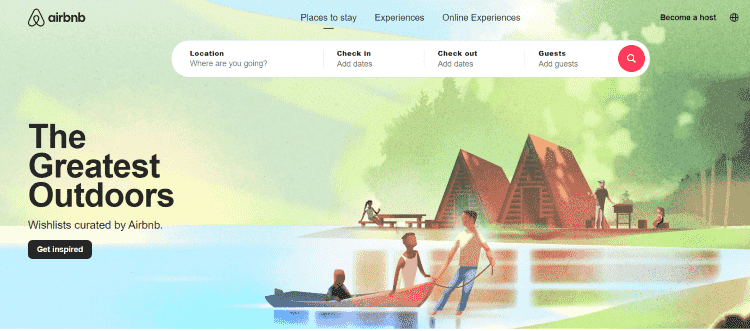Customers often interact and communicate with businesses for various reasons related to marketing, sales, and service support issues.
Such interactions happen throughout the customer journey and give brands an opportunity to connect with customers, understand the needs, and enhance the experience.
Managing customer interactions efficiently is always also the key to increasing retention and advocacy.
60% of consumers say that a good customer experience is important to feel loyalty toward a brand. But good customer experience is not possible unless your company knows how to interact with customers.
There will be different types of interactions across customer journeys and channels, so having the right strategy is essential for customer interaction management.
In this blog, we will discuss customer interactions in detail, understand how to improve customer interaction, and also analyze the importance of customer interaction.
What is customer interaction?
Customer interaction is defined as the process of managing customer interactions across multiple channels and across different stages of the customer sales cycle.
It’s a strategic approach to not only manage client interactions across departments but also maintain cross-functional data synchronization to deliver a better and more personalized customer experience.
Every business needs to have a customer interaction management in place to serve customers better. The customer interaction cycle consists of 5 stages. They are as follows:
- Awareness – It’s the first point in the customer life cycle as customers can choose any channel or medium to gain knowledge of your product and offers.
- Consideration – The customer has discovered your brand and is now evaluating the suitability of your products or services.
- Acquisition – Your business has been evaluated and the customer is now ready to buy from you in the acquisition stage.
- Experience – After the purchase, the next stage is deepening the relationships with the customer through effective help and support
- Loyalty – A customer develops a strong positive vibe about your business and now has become an advocate for your brand.
Importance of Customer Interactions
Customer interactions present a great opportunity for businesses to understand their customers and work on their problems to ensure an improved experience. By managing interaction with customers, a business will be able to build a loyal customer base that will be associated for a long time. A business that has a customer interaction model in place can achieve its targets and keep customers happy.
Customer interaction is important for many reasons.
- To understand the habits and pain points – Interacting with customers can help a business analyze and understand the habits and pain points of the customers.
- To improve the end-user experience – By analyzing and understanding the customers, your business can make data-driven decisions and easily focus on areas that can help improve the end-user experience.
- To reduce churn – Customer interaction can help brands re-think and reassess their strategy in regard to customer satisfaction. This can also help reduce the high level of customer churn.
- To improve brand loyalty – Managing interactions successfully is essential for turning customers into brand advocates as you can easily provide a positive customer experience across communication channels and reduce grievances timely.
Types of customer interactions
Customer interactions can happen for various reasons and the focus in all situations should always be on how to improve customer experience (CX). All the client interactions can broadly be classified into three categories:
Stabilizing – In the early stage of the relationship, the focus of interactions is to stabilize the customer relationship and make customers aware of the systems and processes in place for taking the relationship further.
Critical – Service encounter interactions belong to the critical category and decide whether customers will have a positive or negative experience for the complaint, question, or a special request they have.
Planned – The purpose of planned interactions is to boost customer profitability through up-selling and cross-selling, and also to let the sales or support team leverage the changes in customer’s purchasing patterns.
How Do Good Customer Interactions Improve Your Business?
Every customer interaction is an opportunity to establish a bond of trust and gain loyalty. A business that takes customer interactions seriously witnesses a positive impact across operations. More so, good customer interactions often form the foundation of higher levels of satisfaction.
Here are some of the ways good interaction with customers can improve your business –
Enhanced customer satisfaction
Every customer interaction offers insights into the experience of an individual customer and shows whether or not a customer is happy with the business. It also brings an opportunity to understand the needs and meet those needs, resulting in improved levels of customer satisfaction.
Resolution of customer issues
Customer interaction is the best way for a business to become aware of the customer pain points and challenges. When your business knows what concerns customers, it can always take timely steps toward issue resolution. The more customer issues your business resolves, the more positive impact can it witness on the bottom line.
Improved customer service
Regular customer interactions are a great chance for employees to know customers better and get familiar with their problems. The more your employees get trained in customer interactions, the more knowledgeable they become which can work as a motivation for them to improve customer service.
Insights-driven operations
When your business interacts with customers regularly, it brings data and provides feedback. The insights gained from interactions together with the feedback can improve operations, resulting in customer-driven procedures and steps.
Higher customer retention rates
Customer interactions are vital for winning their loyalty and trust over time. The more you interact with them, the more you are aware of their problems. This is how you can solve their problems and add to their overall experience with your brand, resulting in higher retention rates.
How to Build a Customer Interaction Strategy?
Engaging with your customers is always at the core of building an effective customer interaction strategy. It can help you foster positive relationships over time and successfully meet the needs of your customers. When a business has a customer interaction strategy in place, it removes pain points and achieves happy customers.
Let’s look at the steps involved in building a customer interaction strategy –
Step 1 – Understand your customers
Taking steps to understand your customers is the first step toward building a customer interaction strategy. In this step, the focus should be on identifying the target audience, creating detailed personas, and analyzing their needs and behavior.
Step 2 – Define your goals for interactions
The purpose of interactions should be clear so that you can make the communication relevant and meaningful. Whether you want to improve satisfaction levels boost retention or drive sales, you need to make clear goals and be in alignment with the business strategy.
Step 3 – Choose the channels for interactions
Customer interactions should be smooth and seamless and without any hassles. To achieve this goal, it’s important to choose the channels for interactions beforehand and then optimize your business; presence on those channels.
Step 4 – Make your team skilled and trained
Your business can handle customer interactions effectively when there is a trained and skilled team for the tasks. The team should have in-depth product knowledge, be equipped with the tools and technology, and possess the problem-solving aptitude for interactions.
Step 5 – Adopt a multi-channel approach for interactions
Make sure your business can interact with customers on the channels of their choice. It’s equally important to let customers make a smooth transition between channels. To achieve this goal, you should consider integrating various channels.
Step 6 – Make the support prompt and responsive
Quick and timely response is one of the cornerstones of customer interactions. You should focus on providing quick support to customers and staying responsive to their needs.
8 Most common scenarios of customer interactions and how to handle them
Customers can contact a business for various reasons. The key is always to understand the scenarios where customers choose to interact and be prepared to handle them efficiently. This will ensure a great customer experience.
Here are the 8 most common scenarios of customer interactions.
- Potential customers looking for information
- Customers are evaluating different solutions
- Customer interactions during onboarding
- Customer experience interactions
- Customers needing a quick resolution
- Unhappy customers vent their frustration
- Confused customers searching for the way forward
- Loyal customers deserving special treatment
Let’s look at each scenario in detail to find out more about customer interactions.
1. Potential customers looking for information
A potential customer will look for information and may interact with your business either through the website, ads, social media, or any other channel. It’s a pre-sale stage and offers a great opportunity to understand what customers need.
When a customer looks for information, your focus has to be on delivering them value, educating them about your products, and removing all the bottlenecks from the way. The flow of information should be consistent to help customers decide the next course of action.
Airbnb is a great example of how to let customers find information easily with short and simple form inputs on the website. The page does not have an overflow of information and keeps it simple so that visitors can quickly discover places to stay.
Best practices for brand interactions
- Make your website easy to navigate for the inner pages and check the right placement of the call to action (CTA).
- Update your website content regularly with the new add-on features and upgraded plans so that customers get up-to-date information.
- Prepare and integrate rich content in the format of How-Tos, Whitepaper, Industry Reports, Ebooks, and Checklist for helping customers.
2. Customers are evaluating different solutions
Customers can reach your business and for interactions when they are evaluating different solutions. They have discovered your brand, have analyzed competitor’s products as well, and now in the advanced stage of evaluating the choices at hand.
When customers are there for the purpose of evaluation, the flow of interactions and support should be on building trust and showing thought leadership in the industry.
In the evaluation stage, you need to use MOFU ( middle of the funnel) content to establish yourself as a trusted name in the industry.
64% of respondents say they give more value to user-generated feedback, peer reviews, and third-party data.
A lot of brands use reliable data and links to top industry sources or sponsor their own research as now buyers prefer third-party sources more for information. Buyers look for more real-life experiences and insight from third or neutral parties.
Best practices for evaluation interactions
- Provide customers the race al experiences of customers in the form of testimonials to build trust about your product or service.
- Show them the social proof as it can validate your claims and provide assurance.
- Offer live chat assistance to address all the sales and support-related customer queries in real time.
3. Customer interactions during onboarding
Customer onboarding interactions should be aimed at introducing your product to new users and help them learn how to use it. When the onboarding strategy is effective, users are able to easily understand the product which may improve their experience.
The purpose of onboarding interaction is also to generate interest in the product through a structured and step-by-step guide. The onboarding is always a dynamic process so you need to regularly revise, redesign, or upgrade it in alignment with the new features of the product.
40-60% of users who register for a free trial may never convert if proper onboarding processes and strategies are not used.
On the other hand, proper handling of the onboarding process can ensure a great experience to customers who will then spread the word and this can boost your results hugely.
Best practices for onboarding interactions
- Use video or self-support content to list each feature of the product to help customers understand things easily
- Product tour, product help documentation or demo will always the key parts of the onboarding interactions.
- Extend great customer support with an AI messaging bot to assist in the onboarding process and make the journey smooth.
4. Customer experience interactions
Marketing, sales, and customer service are three of the main reasons why customers interact with businesses. Your business should take every interaction as a chance to delight, convert, and acquire customers.
Customer experience interactions can occur in different ways, be it when a customer sees your ads on social media and comments, or when signs up for a newsletter, or when attend one of your events.
Amazon is a great example of getting its strategy right with digital product experience. Their customer reviews are quite a powerful system to understand whether a product suits your needs.
Best practices for customer experience interactions
- Make it a regular practice to ask customers for feedback via surveys and identify the problem
- Give a shoutout on social media or send a letter of thank for displaying interest in your company.
- Devise an omnichannel service strategy to meet the customers wherever they are.
5. Customers needing a quick resolution
Customers can face an urgent issue, which is mostly related to the purchased product. For pressing issues, it’s important to maintain an open and functional communication channel with support available across various channels.
You need to build a solid customer engagement strategy so that offering quick resolution is never an issue for your business. When there is no proper strategy in place, it can add definitely delay the response leading to dissatisfied customers.
33% of customers feel frustrated when having to wait on hold or when having to repeat themselves to multiple support reps.
To avoid such situations, your business needs to be prompt with the support and also with the resolution.
Best practices for interactions involving urgency
- Maintain a support team across channels and be prompt with delivering a response.
- Send relevant content and links to such customers if the problem is related to the product use.
- Give a return and replacement liberty and offer upgrades to boost customer’s positive experience.
6. Unhappy customers vent their frustration
No business can wish away angry or upset customers. When customers are not happy with any aspect of the product, process, or service, the first thing they do is to reach out to the support team and vent the frustration.
Your sales, support, and marketing team needs to learn the skills to deal when being at the receiving end of the anger of client interactions. The focus should also be on maintaining the standards and etiquette of interactions and help customers with grace.
70% of unhappy customers will shop with your company again if their problems are solved by the support team.
A study by the Carey School of Business at Arizona State University revealed how the satisfaction level of customers doubled when a business added an apology with a monetary value.
Best practices to handle frustrated customers
- Offer a refund or promise of a re-do of a job to keep the customer frustration down.
- Use the strategy of sympathy, empathy, and apology to deal with angry customers.
- Show them the effort put in place with their issue as this works a lot in calming the angry customers down.
7. Confused customers search for the way forward
When it comes to understanding your product inside-out, not all customers will show the same level of comfort. Some will find it easy to handle the while some will have confusion. And when customers are confused, they often have lots of questions and doubts which need to be answered to improve their comfort level with the product.
66% of consumers prefer watching a video to reading a document about a product.
So, using a how-to-video on your home page or website can definitely prove more value to confused users.
Best practices in handling confused customer interactions
- Have a proper how-to guide or video on the website to help customers find answers to their problems.
- Use the live chat software to resolve the matter if there is not much complexity involved.
- Co-browsing can prove very handy in collaborating with the customer on the website and guiding them through with ease.
8. Loyal customers deserving special treatment
Interactions with a loyal customer are always easy but also involve a great deal of care. You know that a particular customer is already satisfied with the product or service, so you drop the guard a bit and this can work in reverse.
If a loyal customer reaches out to you, this brings a great opportunity to boost the bond and build stronger connections through the right approach and offers. You have to delight such customers so that they can turn into brand advocates.
Winning new customers costs 5X more than retaining existing ones.
Frank Body, an Australian skincare company, encourages its customers to share photos using the company product for a chance to feature on the official Instagram account.
Best practices for interactions with loyal customers
- Provide a personalized experience and offers based on past data and purchase history.
- Incentivize your loyal customers with a well designed reward program.
- Mention your repeat customers on your social media account and give them one more reason to feeling special.
Conclusion
Customer experience is driven by how you manage customer interactions. Every interaction or your touchpoint presents an opportunity to engage or build a relationship with your customers. Similarly, managing customer interactions effectively should always be an essential part of your customer communication strategy.
By handling customer interactions successfully, your business can boost the conversion rate, reduce churn rate and enhance customer lifetime value (CL). And when your support team is rightly trained, achieving such targets is never that difficult.








